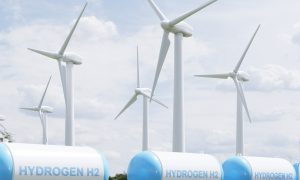India is in good position to make advancements in green hydrogen technology: SBI Capital

India is well-positioned to lead in green hydrogen technology due to its vast 2.1 terawatt renewable energy potential, low energy costs, and growing industrial demand. Key sectors like fertilizers, petroleum, and steel drive hydrogen demand. With affordable production costs and export opportunities to Europe and Japan, India could produce 5 million tonnes of green hydrogen by 2030, saving Rs 1 trillion in fossil fuel imports.
India is in a strong position to become a global leader in green hydrogen technology, according to a report by SBI Capital Markets Ltd. The report highlights key factors such as India’s vast renewable energy capacity, rising demand for hydrogen, low energy costs, and potential for global trade as driving forces behind this growth.
India has one of the highest renewable energy capacities in the world, with a total potential of 2.1 terawatts. The country’s energy sources are well-balanced, with wind power making up 55% and solar energy accounting for 36% of this capacity. To support this growth, India is also working on pumped storage power and battery energy storage systems, which will provide a steady and reliable energy supply.
India’s growing economy is creating strong demand for green hydrogen in sectors like fertilizers, petroleum, and steel. These industries are heavy users of hydrogen, and as they expand, so does the need for sustainable energy alternatives. Compared to other countries, India’s projected growth in these sectors is much higher, making green hydrogen a key part of its future energy strategy.
The report notes that India’s energy production costs are among the lowest in the world, ranging from Rs 2.5 to Rs 3.5 per unit. Even with the added cost of energy storage, renewable energy tariffs remain affordable. This cost advantage allows India to produce green hydrogen at a competitive price, making it an attractive option for both domestic use and export.
According to a report, producing 5 million tonnes of green hydrogen annually by 2030 could save India’s overdependence on imported fossil fuels by saving over Rs 1 trillion. In fact, India is also in a potential position to become a prominent exporter of green hydrogen as it has the opportunity to sell to Europe and Japan where clean energy is surging.
It is viewed as a vital alternative for industries in which other forms of renewable energy cannot be used. The report highlights that hydrogen is crucial in the production of ammonia, methanol, and caustic soda, all of which need hydrogen as a raw material. In steel production, hydrogen can replace coke as a reducing agent, thus offering a cleaner alternative in an industry that is very hard to decarbonize.
To read more about Ethanol Industry & Bio Energy News, continue reading Agriinsite.com
Source : Bio Energy Times

















